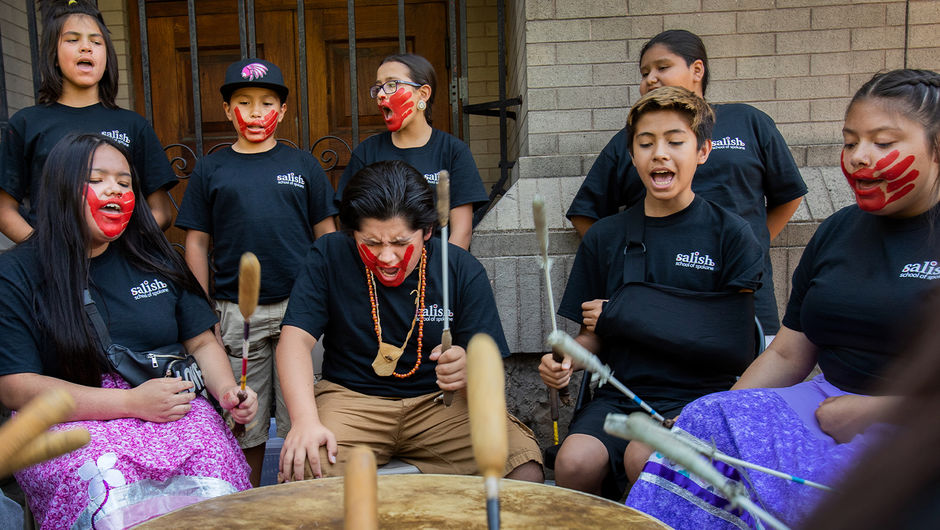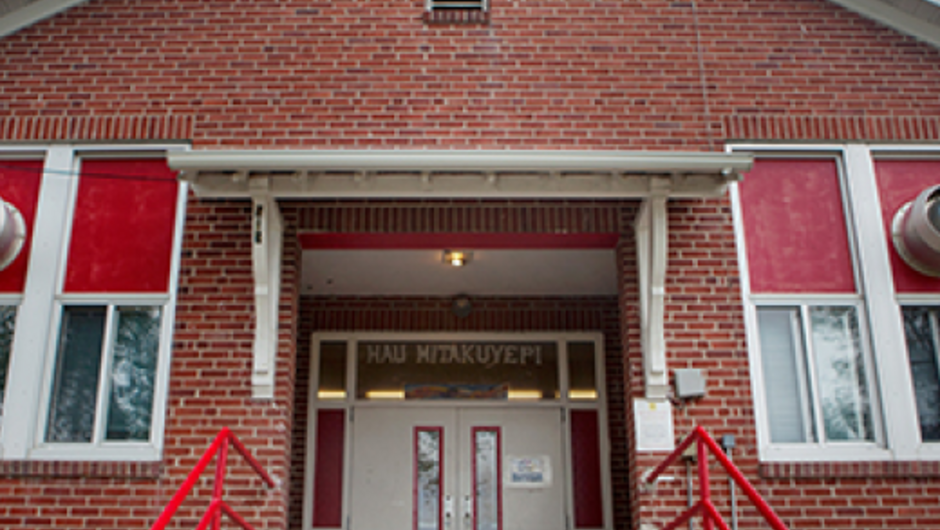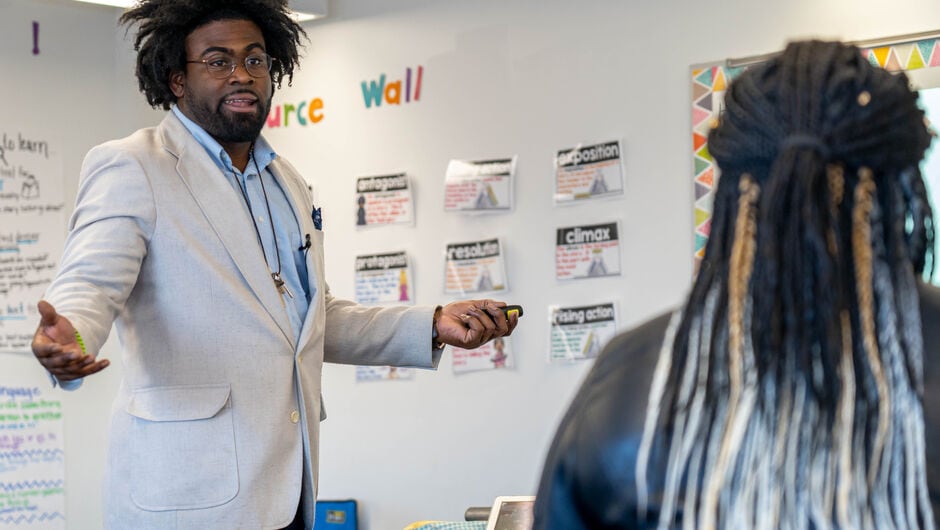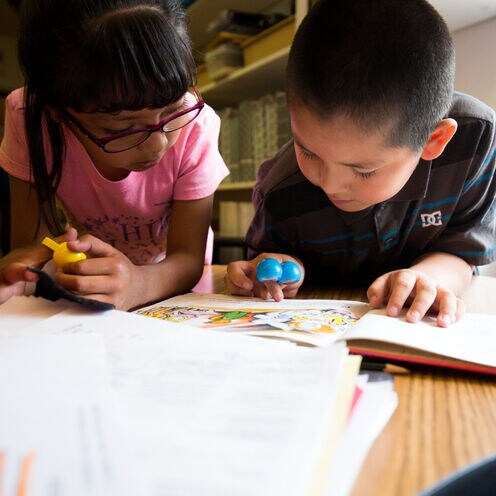
Preserving Native Languages in the Classroom
How Native educators are creating immersive learning experiences that connect students with their Indigenous language, culture, and lifeways.
Andy Nez taught his Native language, Diné, for two years as a corps member in New Mexico, not far from where he grew up. He says the language represents much more than words—it’s a window into a uniquely Navajo worldview. Words, concepts, and ways of phrasing questions are rooted in relationships between people, land, and all living things.
Līhau Godden is the first in several generations in her family to speak fluent Hawaiian, ever since her mother and grandmother were required to learn English as the dominant language in school. As a 2015 Hawai’i corps member, Līhau returned to the same Hawaiian immersion school that she attended as a student, to help high schoolers gain mastery of their Native language.
These are just two examples of Teach For America alumni who are dedicated to preserving their Native languages for future generations of Indigenous students, in the classroom and beyond.
The most recent American Community Survey data collected from 2009 to 2013 found that there are 150 different Native North American languages collectively spoken by more than 350,000 people across the country. Native languages account for nearly half of the 350 total languages spoken in the United States. Yet, many of these languages are at risk of becoming extinct with only a small number of speakers remaining.
The reasons for this decline are complex and impact nearly every Indigenous language spoken in the U.S. They trace their origins back to when the first European explorers came to North America and the events that unfolded over centuries as Native peoples were displaced from their land by colonists and settlers.
The harmful effects of policies enacted during this time—such as requiring Native students to attend English-only boarding schools and the forced relocation and assimilation at the expense of eradicating Native language and culture—are still playing out today.
While there is still much work to be done, there have been great efforts since the Civil Rights era and over the past decades to restore Native languages and preserve Indigenous culture, specifically in the classroom—a place where Native children often feel invisible. This includes local and national efforts, such as the recent Senate approval to reauthorize the Esther Martinez Native American Languages Preservation Act, which supports language preservation and restoration programs for American Indian, Alaska Native, and Native Hawaiian students.
The vast majority of this work has happened at the grassroots level, led by Native leaders, activists, and educators who are most directly impacted by the loss of their language. Native communities are still working to undo laws enacted long ago, establishing community-based immersion schools, and partnering with education agencies to offer Native language in public schools.
Children who learn their Indigenous language are able to maintain critical ties to their culture, affirm their identity, and preserve important connections with older generations. There is also an additional benefit for students who learn their Indigenous language from a teacher who shares the same background, history, and culture.
Teach For America’s Native Alliance Initiative partners with Native communities across the U.S. to recruit more Native teachers into the classroom, particularly in the communities they are from. TFA alums, Līhau Godden and Andy Nez are part of a community of over 300 Native alumni who are helping Native students feel seen by reinforcing their language, culture, and stories in the classroom.
Nurturing the Next Generation of Navajo Speakers
One of the greatest Navajo teachings that Andy follows is, K'ézhnídisin dóó dadílzinii jidísin. It’s a Diné phrase that means “admire all living beings and respect all that is sacred.”
Andy is an enrolled member of the Navajo Nation and currently works for the Department of Diné Education in Window Rock, Arizona, as a senior education specialist. He says his grandparents played an important role in transmitting the Diné language to him. From a young age, Andy joined his grandmother and aunt in traditional Navajo seasonal ceremonies and learned Diné within the context of the changing landscape, the way his family had done for generations.
“Being able to grow up in that environment and converse with elders from 6 or 7 years old all the way into my early teenage years, that's how I picked up the Navajo language,” Andy says
Today, there are approximately 170,000 fluent Diné speakers. While Diné is one of the more widely-spoken Indigenous languages, the number of speakers has declined significantly over the last generation. Between 2000 and 2010, U.S. Census data found that the percentage of Navajos who spoke their Native language dropped from 76 to 51 percent, with younger generations among those who were least fluent.
While Andy doesn’t consider himself a completely fluent Diné speaker, he can read and write in the language and carry on conversations with the elders in his community. As an undergrad, he tutored young Navajo students and says his love of the Diné language and culture led him into teaching.
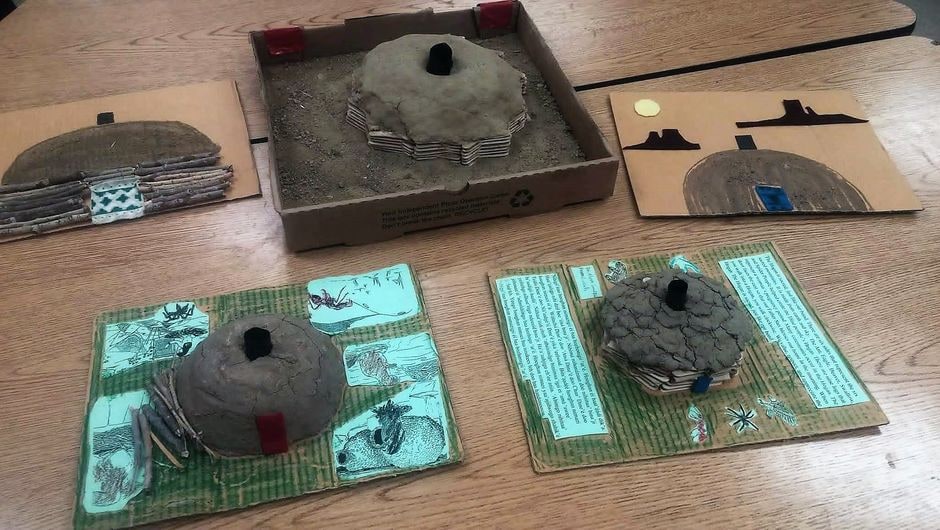
Andy taught bilingual education in Diné and English for grades K-5 at Chee Dodge Elementary School in Ya-Ta-Hey, New Mexico, as a 2014 corps member. The school was named after Henry Chee Dodge, the first Navajo tribal chairman. While Andy taught primarily Navajo students, he says they had a range of familiarity with the language. Some could speak in full sentences, while others were only familiar with a few specific words.
Andy helped his students build fluency by building conversation into his lessons. Andy recalls one of his favorite projects, in which students wrote a Diné word describing themselves or their mood on a yellow sticky note. They arranged their notes to form a giant ear of corn, representing their interconnectedness to each other and the earth. They then practiced how to ask the question, “How do you feel?”
“We talked about how our identity is important, and how we are all part of a community that looks out for each other,” Andy says.
When students learned about the Navajo Code Talkers who helped the U.S. Army create secret intelligence reports during World War II, they got to practice using Diné to translate their own coded messages.
One of the biggest challenges that Andy ran into was a lack of Navajo being spoken at home, particularly among those who are bilingual, where it’s easy to fall back on English. In order to engage his students’ families in speaking the language, Andy created homework assignments that required students to collaborate with their parents, or a community member or talk with an elder in Diné.
“We think about models or strategies or ways that we can pass on the language, which are important,” Andy says. “But really, we should just speak the language whenever we can so that kids are familiarizing themselves.”
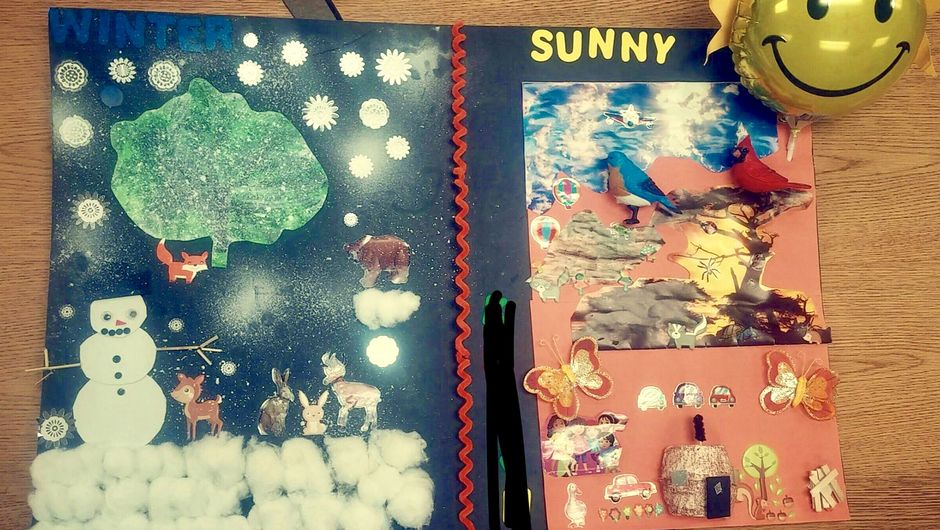
Andy says learning the Diné language helps students stay rooted in their identity and understand their place in the world. He believes that the language has the power to heal the hurts he sees in his community and restore one’s connection with the stories and traditions of the Navajo people.
“Diné language is not just words and sounds. It's teaching the child to appreciate life and to respect their surroundings and all living beings,” Andy says. “When you speak Navajo, you have a sense of respect and a sense of self, and you carry that forward.”
Andy is thinking big about the role he wants to play in preserving the Diné language in the future. He’s currently working on a Ph.D. in educational leadership at Grand Canyon University. He is looking forward to creating Navajo-related programs, teaching gender and sexuality courses through a Navajo cultural lens, and publishing articles in Diné. He says he plans to get more involved in politics and plans to run for Navajo Nation Council in 2022.
Andy has done voice-overs and translation work for various projects, such as a recent documentary called Moroni for President, about a young Navajo man who campaigns to be the first openly gay president of the Navajo Nation. In the meantime, he’s started a series of online lessons called Diné Language in 10 Seconds, in which he uploads videos of himself to his Facebook page, teaching common phrases that can be used at home or in the workplace.
“So as long as I'm on earth, there's going to be a Navajo language speaker, “ Andy says. “That's just my passion and I will continue to do that.”
Teaching Culturally Relevant Science in Hawaiian
When the U.S. government annexed Hawai’i as a territory in 1898, the Hawaiian language was banned from being taught in schools. By the 1980s, English had replaced Hawaiian as the primary language spoken on the islands. Nearly all of the native Hawaiian speakers who were under the age of 18 could fit into a single classroom.
But that all changed in the 1970s, when Hawaiian language activist Larry Kimura led the effort to convince Hawaii’s Department of Education to approve the creation of Hawaiian immersion schools. The campaign was successful, however, the government did not provide any resources or support. The work of creating the schools was left to community members
As a student, Līhau Godden attended one of these immersion schools, Ke Kula ʻo ʻEhunuikaimalino, located in Kona. Then, in 2015 she returned to her alma matter to teach as a corps member.
Because Hawaiian language instruction was banned from schools for several generations, Līhau says she didn’t grow up speaking Hawaiian with her family at home. (Her mother is Hawaiian and her father is not). However, Līhau’s mother wanted Līhau and her siblings to grow up knowing how to speak Hawaiian. In addition to sending her children to the Ke Kula ʻo ʻEhunuikaimalino immersion school, Līhau’s mother also joined the movement to restore Hawaiian language by helping to establish a Hawaiian immersion day-care center.
After college, Līhau returned to Kona and began volunteering at Ke Kula ʻo ʻEhunuikaimalino, helping administer Hawaiian language tests. The school had a shortage of Hawaiian-speaking teachers so Līhau applied through Teach For America, which has a partnership with the school.
“It may seem serendipitous, but it was the perfect fit,” Līhau says.
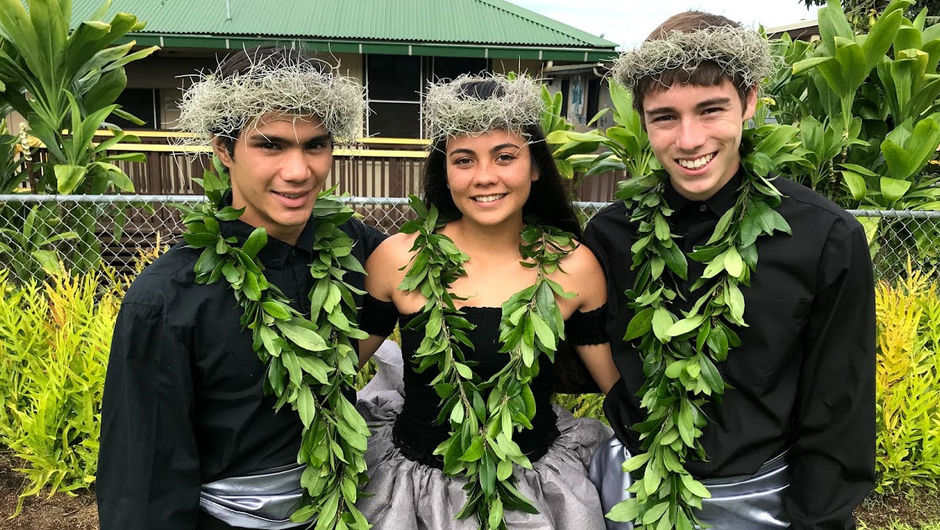
Līhau taught 7-12-grade science, entirely in Hawaiian. While Hawaiian immersion schools have come a long way, Līhau says it is still rare to find teachers who are fluent in Hawaiian and also have specific subject matter expertise.
Līhau’s students came in with a range of fluency in Hawaiian. During her first year of teaching, many students were frustrated with the steep learning curve. They were not only learning new science concepts, but they were learning them entirely in Hawaiian.
“It's a lot of new vocabulary,” Līhau says. “Even for the kids who have been speaking Hawaiian, since they were in kindergarten, if they haven't learned those higher-level science vocabulary words in Hawaiian, they're kind of lost too.”
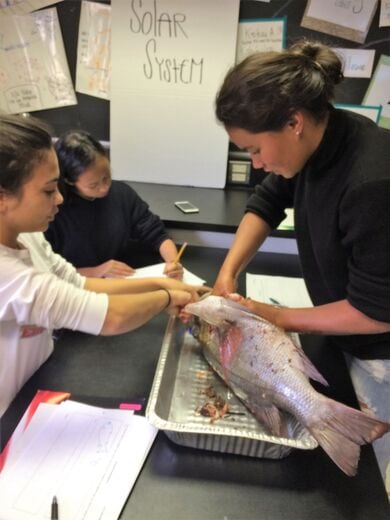
Līhau worked to ground her lessons in Hawaiian culture, helping her students make connections between science, Hawaiian history, and folklore. When learning about the solar system, Līhau wove in traditional Hawaiian stories about the role that the moon phases play in helping people keep time and mark specific rituals throughout the year. They talked about the Hawaiian star compass and how their ancestors used stars to navigate while traveling by sea. During chemistry class, students explored the chemical compounds found in traditional Hawaiian medicine.
“There is so much science baked into the culture,” Līhau says. “You're still touching on all these different science standards and science concepts, but approaching it from a different perspective.”
Līhau says so much of the Hawaiian language and stories are rooted in the idea that everything shares a connection back to the land. The Hawaiian word for land is Āina. But it can also be broken down into words that refer to being fed or nourished, such as ʻai ʻana which means “to eat.” By learning the language, students are also able to view the world through a Hawaiian perspective.
“Through the language, you're able to access cultural protocol and stories and songs,” Līhau says. “Hawaiian is so poetic, and there are so many double meanings that you don't ever fully understand from just the translation.”
During the four years that Līhau taught at Ke Kula ʻo ʻEhunuikaimalino, she was part of a school-wide effort to focus on speaking Hawaiian throughout the school day. She helped the school implement a class in which students were grouped by speaking level, rather than grade level, and worked with her school team to fill in gaps in the school’s Hawaiian-language science curriculum. She also helped develop culturally relevant science standards for immersion schools that were grounded in Hawaiian culture.
“My students made a lot of improvement as the result of teachers and students holding each other accountable for speaking more Hawaiian,” she says. “By the third year, hardly any of my students spoke English to me.”
In 2015 Līhau traveled with her students to Washington, D.C., to perform at TFA’s 25th-anniversary summit. She and her students performed a traditional hula in front of 10,000 people. While Līhau says the experience was a bit nerve-wracking, it was an important moment for her students to be seen and to share their stories in their Native language.
Līhau now lives near where she taught and helps support her family’s business. She’s passionate about preserving the Hawaiian language and contemplating what her next steps will be. For now, she says the most important thing is to normalize the language by speaking it as much as possible in her day-to-day life.
“Whenever I meet kids who go to immersion schools, I always speak to them in Hawaiian so they can see that there are people out there who use it,” Līhau says. “It allows us to stay connected to our values and keep stories from our ancestors alive.”
Sign up to receive articles like this in your inbox!
Thanks for signing up!
Content is loading...



